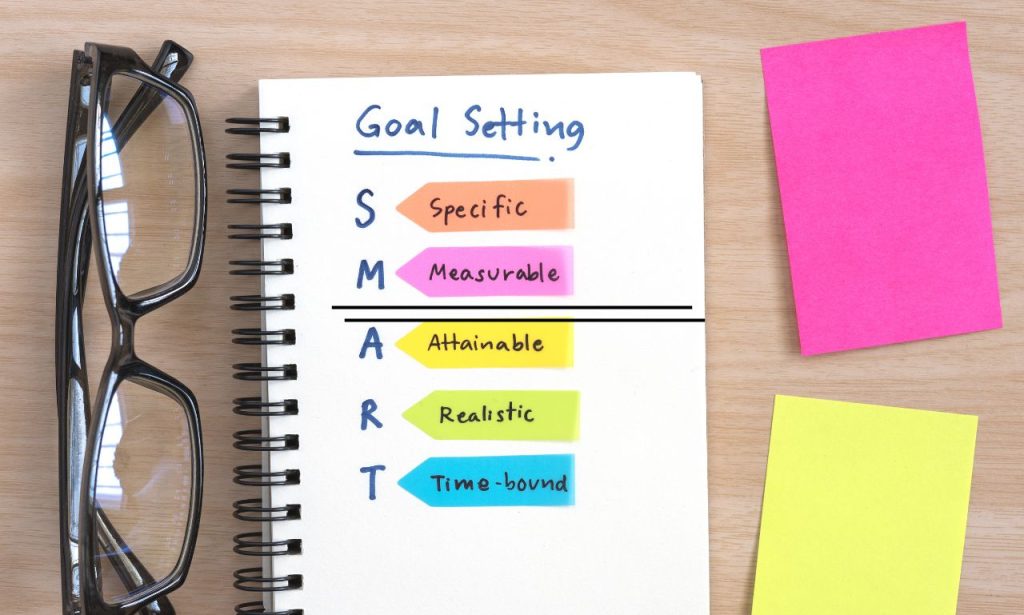Finance teams are the backbone of any successful organization. They manage resources, ensure budgets are met, and drive growth. Setting clear and achievable goals is crucial. But how do you ensure these goals are effective? Enter SMART goals—Specific, Measurable, Attainable, Relevant, and Time-bound. Let’s dive into practical examples of SMART goals for finance employees that will help your team thrive.
Identify Gaps and Automate Workflows with Technology
Automation is key to boosting efficiency. Here’s how you can set a SMART goal around it:
Goal Example:
Goal: “Identify and automate 50% of manual invoice processing tasks by Q4.”
- S: Automate 50% of manual invoice tasks.
- M: Track the number of tasks automated.
- A: Use automation software that the team is trained to use.
- R: Reduces manual errors and increases productivity.
- T: Complete by the end of Q4.
Steps to Achieve This Goal:
- Audit Current Processes:
- Identify repetitive tasks.
- Evaluate time spent on each task.
- Select Automation Tools:
- Research tools like HighRadius.
- Consider features like AI-based worklists and automated dunning.
- Train Staff:
- Conduct workshops on using new tools.
- Provide ongoing support and troubleshooting.
- Implement and Monitor:
- Start with a pilot program.
- Monitor progress and adjust as needed.
Train Your Employees in AI and ML

Embracing AI and Machine Learning (ML) can transform finance operations. Here’s a SMART goal to get started:
Goal Example:
Goal: “Train 80% of finance employees in basic AI and ML concepts by the end of the year.”
- S: Train finance employees in AI and ML.
- M: Track the percentage of employees trained.
- A: Use online courses and workshops.
- R: Enhances decision-making and efficiency.
- T: Complete by year-end.
Steps to Achieve This Goal:
- Identify Training Needs:
- Survey employees to gauge current knowledge.
- Identify key areas for improvement.
- Choose Training Programs:
- Select platforms like Coursera or Udemy.
- Focus on courses relevant to finance.
- Schedule Training Sessions:
- Set up a training calendar.
- Ensure sessions are convenient for all employees.
- Evaluate and Adjust:
- Collect feedback from participants.
- Adjust training content and methods as needed.
Restructure Your Finance Team
Adapting team structures can lead to better efficiency and innovation. Here’s a SMART goal for restructuring:
Goal Example:
Goal: “Restructure the finance team to include decentralized units by Q3.”
- S: Implement decentralized finance units.
- M: Measure the number of units created.
- A: Use existing team members and new hires.
- R: Enhances flexibility and decision-making.
- T: Complete by the end of Q3.
Steps to Achieve This Goal:
- Assess Current Structure:
- Identify strengths and weaknesses.
- Gather input from team members.
- Plan New Structure:
- Design decentralized units.
- Define roles and responsibilities.
- Communicate Changes:
- Announce the restructuring plan.
- Address concerns and provide support.
- Implement and Monitor:
- Roll out the new structure in phases.
- Monitor performance and make necessary adjustments.
Grow Through Innovations
Innovation drives growth. Here’s how to set a SMART goal focused on innovation:
Goal Example:
Goal: “Launch three new innovative financial products by Q4.”
- S: Launch three new financial products.
- M: Count the number of products launched.
- A: Use existing R&D resources.
- R: Drives growth and competitiveness.
- T: Complete by the end of Q4.
Steps to Achieve This Goal:
- Identify Opportunities:
- Conduct market research.
- Gather customer feedback.
- Develop Concepts:
- Brainstorm ideas with the team.
- Create prototypes.
- Test and Refine:
- Pilot the new products.
- Collect and analyze feedback.
- Launch and Promote:
- Roll out the final products.
- Use marketing strategies to promote them.
Raise Capital to Support Growth
Raising capital is crucial for expansion. Here’s a SMART goal to help with capital raising:
Goal Example:
Goal: “Raise $5 million in growth capital by Q2.”
- S: Raise $5 million.
- M: Track the amount of capital raised.
- A: Use investor pitches and funding rounds.
- R: Supports business expansion.
- T: Complete by the end of Q2.
Steps to Achieve This Goal:
- Prepare Financial Documents:
- Create detailed financial projections.
- Prepare a compelling pitch deck.
- Identify Potential Investors:
- Research investors interested in your industry.
- Network at industry events.
- Pitch and Negotiate:
- Schedule meetings with potential investors.
- Negotiate terms and conditions.
- Secure Funds:
- Finalize agreements.
- Ensure funds are received and allocated properly.
Reduce Operating Costs
Cutting costs without sacrificing quality is a delicate balance. Here’s a SMART goal to reduce operating costs:
Goal Example:
Goal: “Reduce operating costs by 15% by Q3.”
- S: Reduce operating costs.
- M: Measure the percentage reduction.
- A: Use cost-saving strategies.
- R: Improves profitability.
- T: Complete by the end of Q3.
Steps to Achieve This Goal:
- Analyze Current Costs:
- Identify major cost drivers.
- Evaluate cost-saving opportunities.
- Implement Cost-Saving Measures:
- Negotiate better terms with suppliers.
- Adopt energy-saving practices.
- Monitor and Adjust:
- Track cost savings.
- Adjust strategies as needed.
- Report Results:
- Share progress with stakeholders.
- Celebrate successes.
Improve Diversity, Equality, and Inclusion (DEI)

DEI is essential for a thriving workplace. Here’s a SMART goal to improve DEI:
Goal Example:
Goal: “Increase diversity hires by 20% and implement DEI training for all employees by Q4.”
- S: Increase diversity hires and provide DEI training.
- M: Track the percentage of diversity hires and training completion.
- A: Use targeted recruitment and training programs.
- R: Enhances workplace culture and performance.
- T: Complete by the end of Q4.
Steps to Achieve This Goal:
- Assess Current DEI Status:
- Analyze current diversity metrics.
- Identify areas for improvement.
- Develop Recruitment Strategies:
- Partner with diverse talent pools.
- Use inclusive job postings.
- Implement DEI Training:
- Schedule regular training sessions.
- Provide resources and support.
- Monitor and Report:
- Track progress on diversity hires and training.
- Report results to stakeholders.
Table Comparing Key Goals
| Goal | Specific | Measurable | Attainable | Relevant | Time-bound |
|---|---|---|---|---|---|
| Automate Workflows | Identify and automate 50% of tasks | Track tasks automated | Use automation software | Increases productivity | End of Q4 |
| Train Employees in AI and ML | Train 80% in AI and ML concepts | Track percentage trained | Use online courses | Enhances decision-making | End of year |
| Restructure Finance Team | Decentralize units | Measure units created | Use existing team members | Enhances flexibility | End of Q3 |
| Grow Through Innovations | Launch three new products | Count products launched | Use R&D resources | Drives growth | End of Q4 |
| Raise Capital | Raise $5 million | Track amount raised | Use investor pitches | Supports expansion | End of Q2 |
| Reduce Operating Costs | Reduce costs by 15% | Measure percentage reduction | Use cost-saving strategies | Improves profitability | End of Q3 |
| Improve DEI | Increase diversity hires by 20% | Track hires and training | Use recruitment and training | Enhances culture | End of Q4 |
Conclusion
Setting SMART goals is essential for driving success in the finance department. By focusing on specific, measurable, attainable, relevant, and time-bound objectives, finance teams can achieve remarkable results. Whether it’s through automation, training, restructuring, innovation, capital raising, cost reduction, or improving DEI, these goals will help your team excel.
ALSO READ: Best Finance Books for Women
FAQs on SMART Goals for Finance Employees
Some examples include increasing revenue, reducing costs, improving profit margins, enhancing financial forecasting capabilities, and improving financial reporting accuracy.
Examples for accountants include improving financial reporting accuracy, reducing accounting errors, increasing efficiency in financial processes, optimizing tax planning, and enhancing internal controls to prevent fraud.
Short-term goals may include reducing operating costs, improving cash flow, optimizing working capital management, developing effective financial risk management strategies, and enhancing internal controls to prevent fraud.




